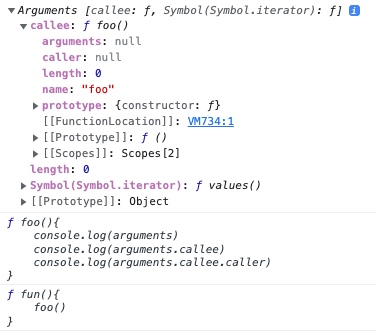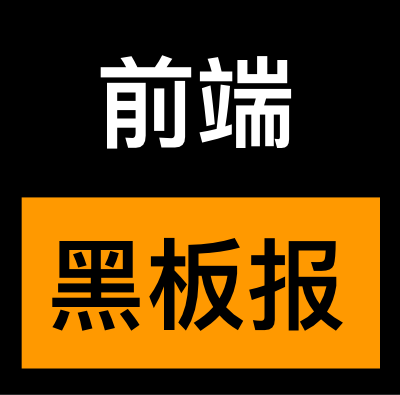
原文链接:https://dev.to/bhagatparwinder/lesser-known-javascript-tricks-kjj
构造函数的括号可选
const newDate = new Date(); // valid
const myClass = new MyClass(); // valid
const anotherDate = new Date; // Also valid
const myClass = new MyClass; // You bet this is valid
只有当构造函数需要参数时,括号才是必须的。
With 语句
with 语句是不推荐使用的,并且在 ES5 的严格模式下是禁用的。
with 扩展了语句的作用域,with 会把传入参数上的所有属性都附加到作用域链上。
const person = {
name: "Parwinder",
age: 33,
work: "Software Architect"
}
with (person) {
console.log(`Hi, I am ${name}, and I am ${ age } years old. I work as a ${work}.`);
// Hi, I am Parwinder, and I am 33 years old. I work as a Software Architect.
}
Function 的参数
每个函数(除了箭头函数)有一个 arguments 类数组对象,包括所有传递给函数的参数。
function foo(a, b, c) {
console.log(arguments[0]); // 1
console.log(arguments[1]); // 2
console.log(arguments[2]); // 3
}
foo(1, 2, 3);
arguments 有两个属性:
- arguments.callee: 被调用的函数;
- arguments.callee.caller: 调用函数的函数;
function foo(){
console.log(arguments)
console.log(arguments.callee)
console.log(arguments.callee.caller)
}
function fun(){
foo()
}
fun()
结果:

注意:就像上面的 with 语句,ES5 的严格模式下 callee 和 caller 是被禁止的。
纯对象
一个纯对象是在其 prototype 上没有方法的。
const x = {};
上面创建了一个对象,但其 prototype 上有 constructor 属性和 hasOwnProperty、isPrototypeOf 和 toString 这样的方法。
const x = Object.create(null);
create(null) 生成了一个没有 prototype 的对象!
移出数组中的重复项
const arr = [1, 1, 1, 1, 2, 3, 4, 5, 6, 7, 6, 6, 6, 7, 8, 9];
const arrWithoutDuplicates = [...new Set(arr)];
console.log(arrWithoutDuplicates); // [ 1, 2, 3, 4, 5, 6, 7, 8, 9 ]
Set 中的值都是唯一的,当数组经过 Set 包装后,我们只需要通过 spread(…)操作符分解到一个空的数组就行了。
可选链
无论何时你需要获取嵌套对象上的属性且你不知道它是否存在,你需要向下面这样做:
const nestedObject = {
name: "Parwinder",
details: {
age: 33,
cars: {
first: "jeep",
second: "tesla",
accessories: {
x: 200,
y: 300
}
}
}
}
if (nestedObject &&
nestedObject.details &&
nestedObject.details.cars &&
nestedObject.details.cars.accessories) {
console.log(nestedObject.details.cars.accessories.x); // 200
}
可选链(Optional Chaining)就是来解决这个繁琐问题的,通过可选链( Options Chaining)你可以这样做:
const nestedObject = {
name: "Parwinder",
details: {
age: 33,
cars: {
first: "jeep",
second: "tesla",
accessories: {
x: 200,
y: 300
}
}
}
}
console.log(nestedObject?.details?.cars?.accessories?.x); // 200
注意:Optional Chaining 出现在 ES2020/ES11 规范里,来看看这里:https://tc39.es/ecma262/2020/。



